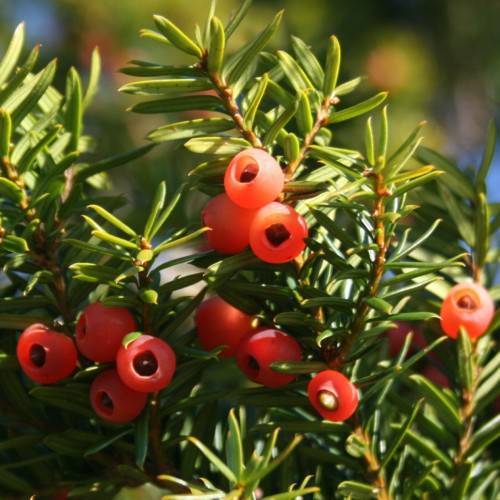
Japanese yew
Taxus cuspidata 'Capitata'
Also Known As - Japanese yewCycle:
Perennial
Watering:
Average
Hardiness Zone:
4 - 7
Flowers:
Flowers In Spring
Sun:
Deep shade, Filtered shade, Full sun, Part sun/part shade
Soil:
Acidic, Well-drained
Fruits:
Fruits In Summer Ready In
Leaf:
Yes
Growth Rate:
Low
Maintenance:
Low
Poisonous To Humans:
Yes
Poisonous To Pets:
Yes
Drought Tolerant:
Yes
Salt Tolerant:
Yes
Thorny:
Yes
Care Level:
Moderate
watering
The Japanese yew (Taxus cuspidata 'Capitata') requires moist soil, so it is important to water it regularly. Water the plant deeply about once a week when the soil is dry; water slowly until the water flows from the drainage holes. Do not allow the soil to become soggy. During hotter months, the Japanese yew may need to be watered more often. Make sure to keep the soil evenly moist and not overwater to avoid root rot. When the temperature drops, you can slow down on the watering.
sunlight
Japanese yew (Taxus cuspidata 'Capitata') prefers partial to full sun. For optimal growth, your Japanese yew should receive direct sunlight for 4 to 6 hours a day. Ideally, it would be best to receive early morning sun, followed by some afternoon shade. In very hot climates, it should be placed in shade during the heat of the day.
pruning
Japanese yew can be pruned almost any time of year. However, it is best to prune the plant in late winter or early spring. Pruning should involve selective thinning of branches and removal of any deadwood. If this is done every 2-3 years, it will help the plant maintain its natural shape and keep its density. Additionally, if needed, pruning of overgrown branches in early summer or fall can be done as well.
